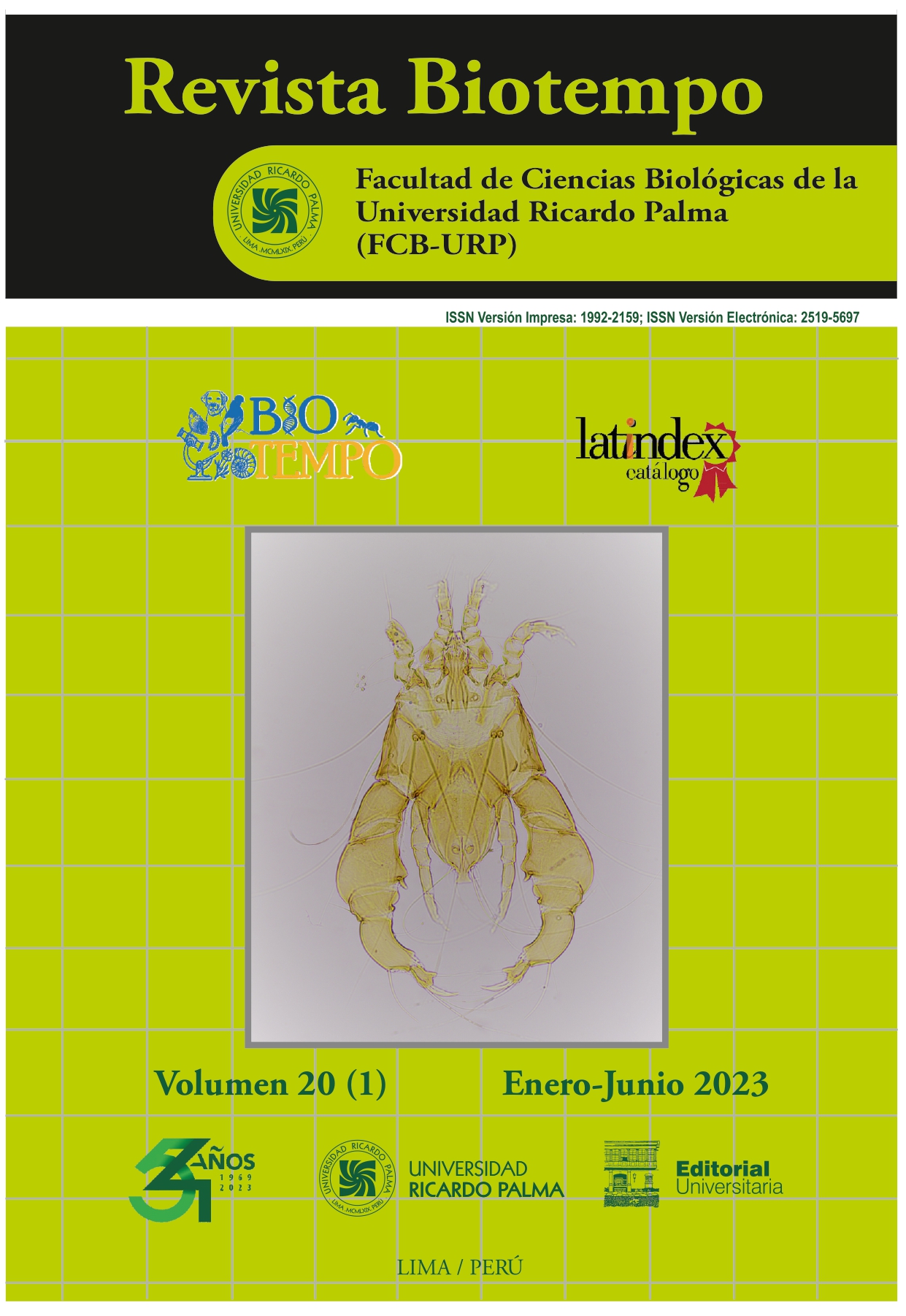Efecto del bosque ribereño sobre la comunidad de peces de los ríos Tumbaro, Naranjillo y Mayo en la comunidad nativa Shampuyacu, Awajun, Perú
DOI:
https://doi.org/10.31381/biotempo.v20i1.5691Palabras clave:
bosque ribereño , Characiformes, Comunidad Nativa , peces , perturbación del bosqueResumen
La presente investigación tiene como objetivo determinar el efecto del bosque ribereño sobre la comunidad de peces de los ríos Tumbaro, Naranjillo y Mayo en la Comunidad Nativa de Shampuyacu, Awajun, Perú. Se realizaron muestreos en 14 puntos en los tres ríos situados en la Comunidad Nativa. La recolección de peces implicó el uso de artes de pesca
pasiva y activa. Se clasificó el bosque ribereño mediante imágenes satélitales en tres categorías: bosque primario, bosque secundario y cultivo agrícola, y finalmente fueron medidos ocho parámetros fisicoquímicos. Se colectaron un total de
1.198 peces distribuidos en 12 familias y 27 especies. Los Characiformes representaron el 57,3% del total, seguidos de los Siluriformes (32,7%) y Perciformes (10%). Chaetostoma marmorescens Eigenmann & Allen, 1942, Chaetostoma sp. (Tschudi, 1846) e Hypostomus fonchii (Weber & Montoya-Burgos, 2002) fueron las tres especies más abundantes con
7,33 %, 6,90 % y 4,37 %, respectivamente. El río Tumbaro presentó la mayor riqueza específica (S) con 23 especies, seguido del río Naranjillo (S = 21) y río Mayo (S = 18). La riqueza específica (S), el índice de Shannon-Wiener (H’) y el índice de Simpson (D) fueron diferentes entre los puntos categorizados como agrícolas y bosques primarios; mientras
que los puntos considerados como bosques secundarios no fueron diferentes con bosque primario, y con cultivo agrícola. Los parámetros físico-químicos como la temperatura y el amonio presentaron un efecto positivo significativo sobre H’,
mientras que el nitrato y conductividad tuvieron un efecto negativo significativo. Se concluye que la perturbación del bosque ribereño tiene un efecto significativo sobre la diversidad de peces de los ríos Tumbaro, Naranjillo y Mayo en la Comunidad Nativa de Shampuyacu, Awajun, Perú.









